 If you’ve shopped for cast iron or carbon steel cookware, you’ve probably seen the word “pre-seasoned” in the pan’s description. Pre-seasoned cookware has been specially treated with a coating of oil to create a non-stick surface. Certain types of cookware benefit from seasoning. It improves the pan’s performance and makes clean-up a breeze. I also highly recommend keeping up with seasoning your cast iron cookware! You’ll thank me later.
If you’ve shopped for cast iron or carbon steel cookware, you’ve probably seen the word “pre-seasoned” in the pan’s description. Pre-seasoned cookware has been specially treated with a coating of oil to create a non-stick surface. Certain types of cookware benefit from seasoning. It improves the pan’s performance and makes clean-up a breeze. I also highly recommend keeping up with seasoning your cast iron cookware! You’ll thank me later.
What Types of Cookware Are Seasoned?
Most types of cookware do not need to be seasoned. Cast iron and carbon steel benefit most from seasoning, but tin and hard-coat aluminum may also be seasoned.
Seasoning does more than just provide a non-stick surface. In the case of cast iron cookware, seasoning also prevents the pan from rusting. This is the primary reason why most cast iron pots and pans are pre-seasoned before they are shipped to the consumer. Without this protective coating, the pan may rust before it arrives at the store or the consumer’s home.
In some cases, cast iron and carbon steel cookware will arrive unseasoned. In this case, the manufacturer will provide instructions on how to properly season the pan. The pan must be seasoned before it can be used.
How to Season Cookware
Seasoning is fairly simple and straightforward. The process is lengthy, but it’s mostly hands-off. All you need is some cooking oil and time.
Cast iron connoisseurs will tell you that the type of oil you use makes a difference, but most manufacturers will state that any type of cooking oil can be used. The most common and popular oil choices are:
- Flaxseed oil (the preferred type)
- Vegetable oil
- Lard
- Shortening
Some people also use coconut and olive oil to season their pans, but not everyone succeeds with these oils. Shortening, vegetable oil and flaxseed oil are the preferred methods and are generally foolproof.
To season cast iron cookware:
- Start off with a clean pan.
- Preheat your oven to the lowest temperature.
- Apply a thin layer of cooking oil to the interior and exterior of the pan. Some people also apply the oil to the handles of the pan. If you do decide to do this, be very careful when handling the pan as the handle will be slippery.
- Line a baking sheet with aluminum foil and place it on the bottom shelf of the oven. The lined pan will be used to catch any oil that may drip from the cast iron pan.
- Place the cast iron pan in the oven, and allow the seasoning to “bake” for approximately one hour.
- Turn off the oven and allow the pan to cool inside.
- Store in a dry, cool place.
Cast iron cookware will need to be re-seasoned from time to time. When food begins sticking to the surface of the pan, it’s time to re-season.
When purchasing seasoned cookware, it’s important to remember that this is just a basic seasoning. To create a lasting non-stick surface, you must cook with quite a bit of fat until you have built up a nice, thick layer of seasoning. To preserve the seasoning, cleaning with just a towel and kosher salt is recommended.
Check out this awesome video on how to season a cast iron skillet!


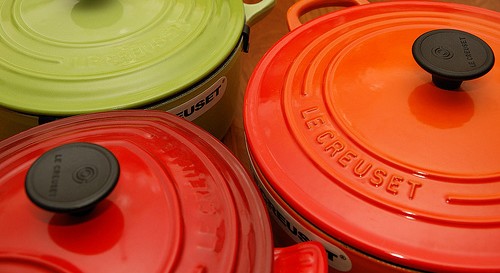
 When it comes to cookware, heat distribution shouldn’t be your only concern. Some cooking materials may leach metals and other materials into your food, which may harm your health and alter the flavor of your food. If health is your primary concern when cooking in the kitchen, the cookware materials below are the healthiest choices.
When it comes to cookware, heat distribution shouldn’t be your only concern. Some cooking materials may leach metals and other materials into your food, which may harm your health and alter the flavor of your food. If health is your primary concern when cooking in the kitchen, the cookware materials below are the healthiest choices.
 One of the first questions people ask when buying cookware is, “Should I buy a cookware set, or individual pots and plans?” It can be difficult to answer this question because it really depends on your cooking style, your budget and how many cookware pieces you currently own. In some cases, purchasing a set is the best option, and other times, purchasing individual pieces is more practical. When deciding whether or not to buy a cookware set, consider the following:
One of the first questions people ask when buying cookware is, “Should I buy a cookware set, or individual pots and plans?” It can be difficult to answer this question because it really depends on your cooking style, your budget and how many cookware pieces you currently own. In some cases, purchasing a set is the best option, and other times, purchasing individual pieces is more practical. When deciding whether or not to buy a cookware set, consider the following: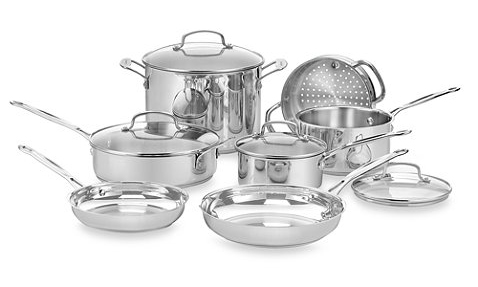
 Cuisinart’s Chef’s Classic Stainless Steel collection was inspired by the kitchens of France. Complete with an elegant, polished stainless steel finish, this cookware is designed to take on any cooking task.
Cuisinart’s Chef’s Classic Stainless Steel collection was inspired by the kitchens of France. Complete with an elegant, polished stainless steel finish, this cookware is designed to take on any cooking task.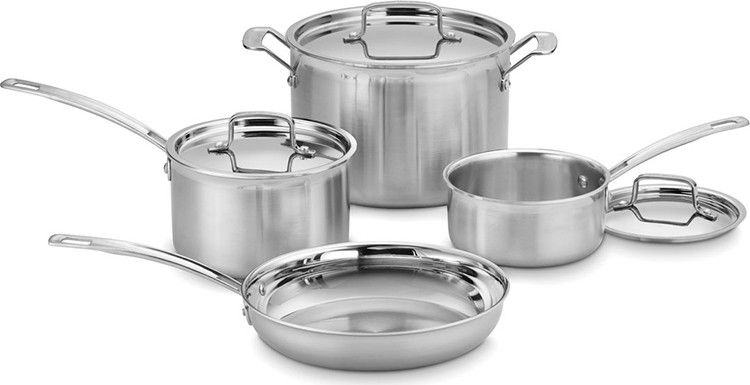
 Cuisinart’s MultiClad Pro lineup is professional cookware designed for gourmet cooking. Featuring a triple ply construction with a pure aluminum core, this cookware heats up quickly and distributes heat evenly for superior, professional performance. Chosen by chefs and serious cooks, MultiClad Pro can take on any cooking task with ease.
Cuisinart’s MultiClad Pro lineup is professional cookware designed for gourmet cooking. Featuring a triple ply construction with a pure aluminum core, this cookware heats up quickly and distributes heat evenly for superior, professional performance. Chosen by chefs and serious cooks, MultiClad Pro can take on any cooking task with ease.
 Staub cast iron frying pans are crafted with the same exceptional quality you’ve come to expect from the Staub name. Available in 10”, 12” and mini 4.75” sizes, these frying pans can be used for a variety of cooking tasks. Both novice and experienced cooks alike enjoy the durability and versatility of these pans. This is a must have frying pan if you don’t have any cast iron in your kitchen.
Staub cast iron frying pans are crafted with the same exceptional quality you’ve come to expect from the Staub name. Available in 10”, 12” and mini 4.75” sizes, these frying pans can be used for a variety of cooking tasks. Both novice and experienced cooks alike enjoy the durability and versatility of these pans. This is a must have frying pan if you don’t have any cast iron in your kitchen.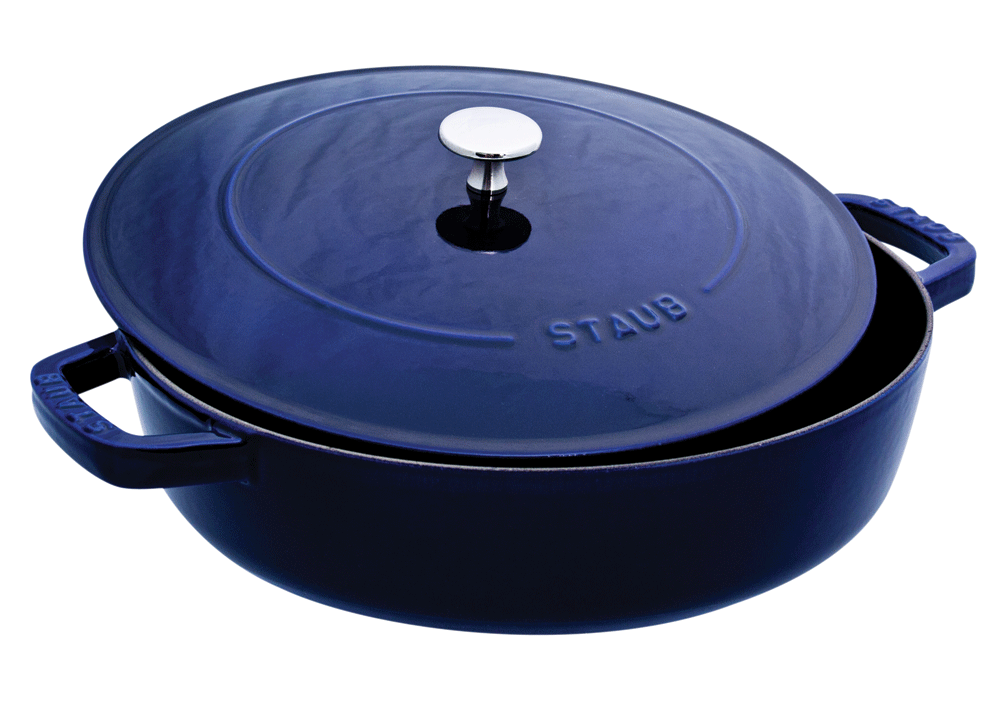
 Staub sauté pans are the perfect addition to any cookware collection. Constructed with high quality cast iron and finished with an enamel surface, these sauté pans are easy to maintain and attractive enough to double as a serving dish.
Staub sauté pans are the perfect addition to any cookware collection. Constructed with high quality cast iron and finished with an enamel surface, these sauté pans are easy to maintain and attractive enough to double as a serving dish.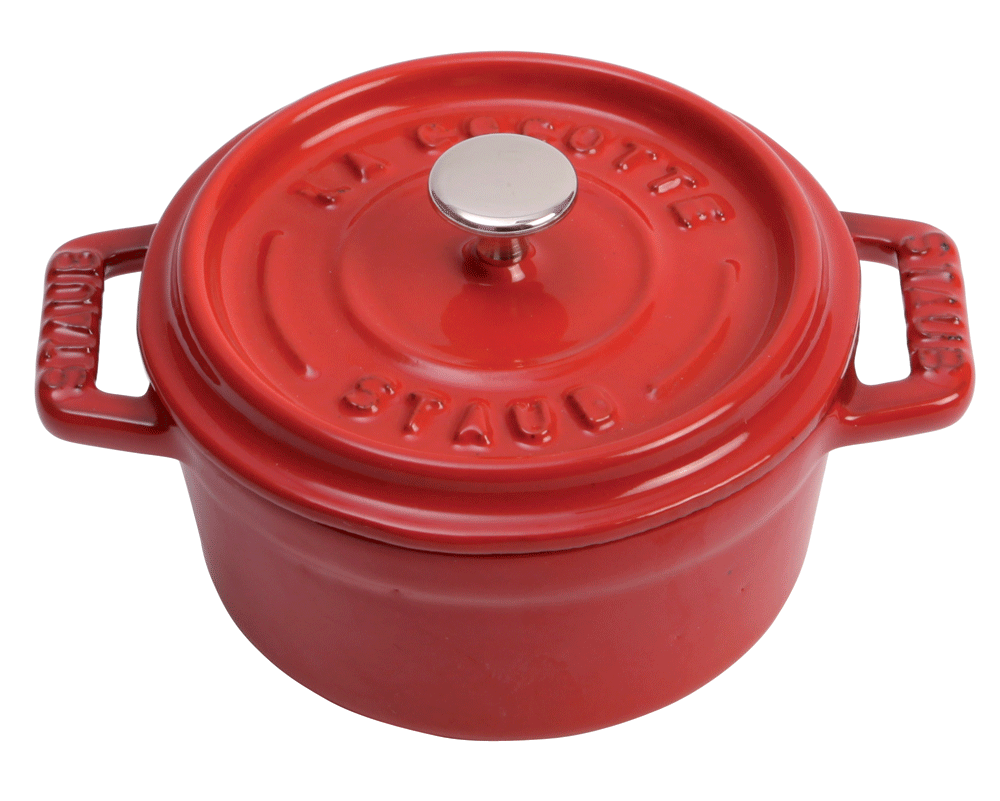
 Staub offers some of the highest quality cast iron cookware in the world. Complete with an enameled surface, the brand’s cookware is easy to care for and performs exceptionally well in the kitchen. While the brand offers a wide range of pots, pans and specialty cookware, their collection of mini cocottes is one of their most popular products.
Staub offers some of the highest quality cast iron cookware in the world. Complete with an enameled surface, the brand’s cookware is easy to care for and performs exceptionally well in the kitchen. While the brand offers a wide range of pots, pans and specialty cookware, their collection of mini cocottes is one of their most popular products.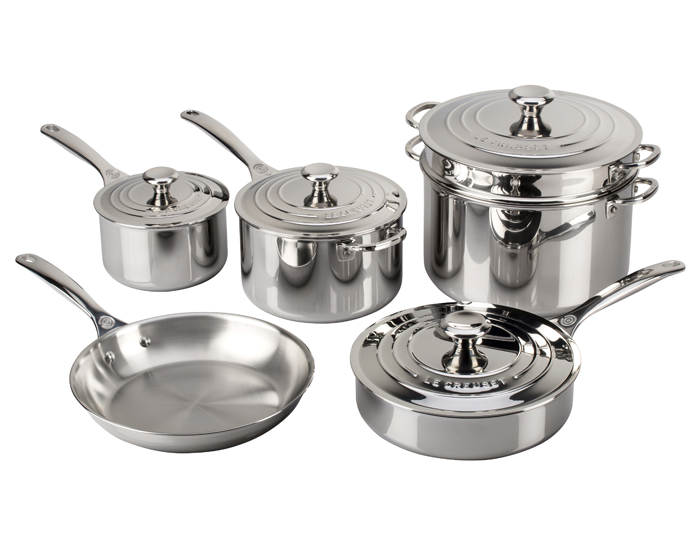
 Le Creuset’s tri-ply stainless steel cookware is every bit as beautiful as it is high performing. Complete with a pristine, polished stainless steel surface, this collection of cookware is ideal for professionals and true cooking connoisseurs.
Le Creuset’s tri-ply stainless steel cookware is every bit as beautiful as it is high performing. Complete with a pristine, polished stainless steel surface, this collection of cookware is ideal for professionals and true cooking connoisseurs.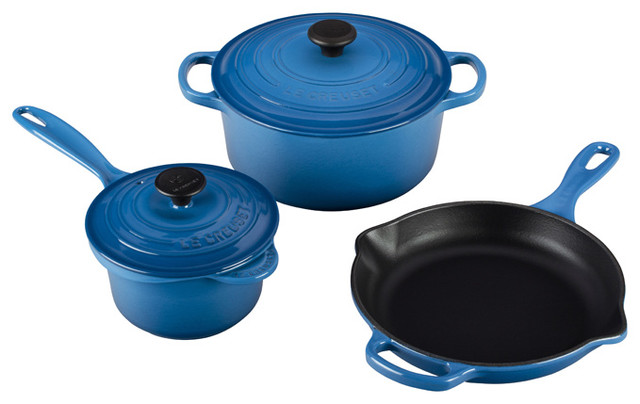
 Le Creuset is a leader in the cookware industry, and their signature cast iron sets are a testament to the quality this brand is known for. Each piece is cast in sand molds and inspected by 15 different artisans before making its way to store shelves. The brilliant heat retention of cast iron makes this cookware collection exceptional both on the stovetop and in the oven.
Le Creuset is a leader in the cookware industry, and their signature cast iron sets are a testament to the quality this brand is known for. Each piece is cast in sand molds and inspected by 15 different artisans before making its way to store shelves. The brilliant heat retention of cast iron makes this cookware collection exceptional both on the stovetop and in the oven.